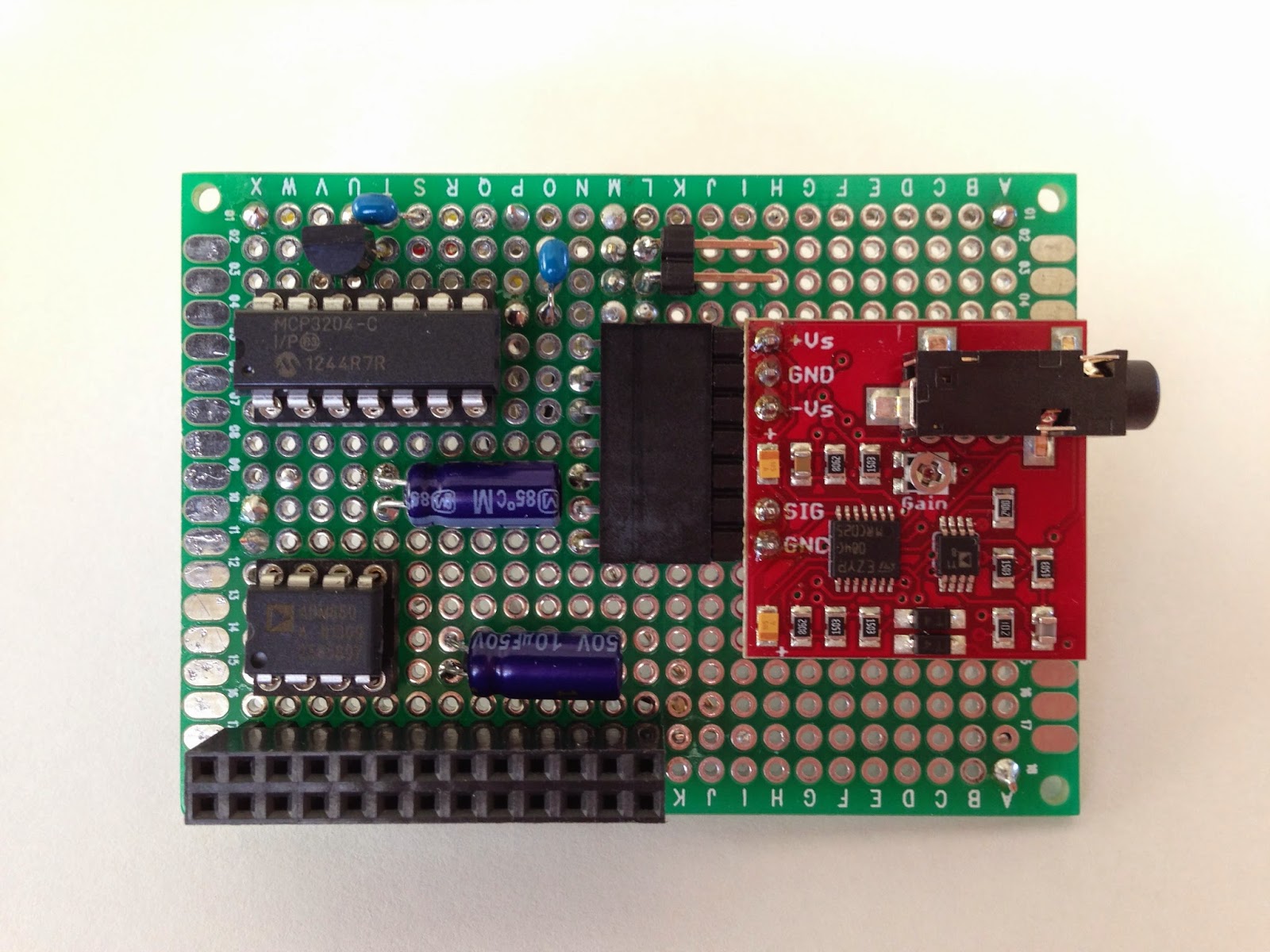Exercising the Muscle Sensor
NOTE: The gain potentiometer was set incorrectly for this experiment. An updated scope capture is posted here. I'll leave these images, since the waveforms are still correct, aside from the magnitude.
A few weeks ago, I started characterizing the Muscle Sensor v2. My initial tests were performed using a dual +/- 9 Volt supply, with the Muscle Sensor potentiometer set to the maximum gain.
First, I measured the output of the Muscle Sensor, without the electrodes plugged into the board. The oscilloscope capture below shows the signal, which was about 6 mV of 60 Hz noise. The Muscle Sensor runs off of batteries, so this noise isn't coming from the power supply. It is the electrical noise induced into the circuit from near-by electronics running off AC power.
 | ||||||
| 6 mV of 60 Hz noise |
Next, I plugged in the electrodes and attached them to the side of my face. Without moving my jaw, the output was 76 mV of noise. The frequency of this noise was around 114 Hz, which is pretty close to 120 Hz (a harmonic of 60 Hz noise).
 |
| 76 mV of 114 Hz noise |
For the next test, I clenched my teeth with the electrodes connected to my temporalis muscles. The result was a 150 mV spike.
 | ||||||||||
| Clench measured at temporalis |
Here's another capture, while grinding my teeth (160 mV spike).
 |
| Grinding measured at temporalis |
Next, I moved the electrodes to my masseter muscles. I placed one electrode on each side of my face and the ground reference on my jaw bone (near my chin). Here's the output during a big yawn (238 mV spike).
 |
| Big yawn measured at masseter |
Finally, I attached both electrodes to my left masseter muscle and the ground reference to a boney part of my jaw. I clenched my teeth and recorded the output. The result was a 180 mV spike, with much less noise than the previous configurations.
 |
| Clench measured at left masseter |
In conclusion, the final setup produced the most usable signal. I'm not sure why the noise floor was so much lower on the final run. Perhaps it had something to do with the placement of the ground reference electrode. I'm planning to repeat some of these tests with a lower power supply voltage. If the output looks comparable, I'll probably power the circuit with a single lithium polymer battery.

Comments
Post a Comment